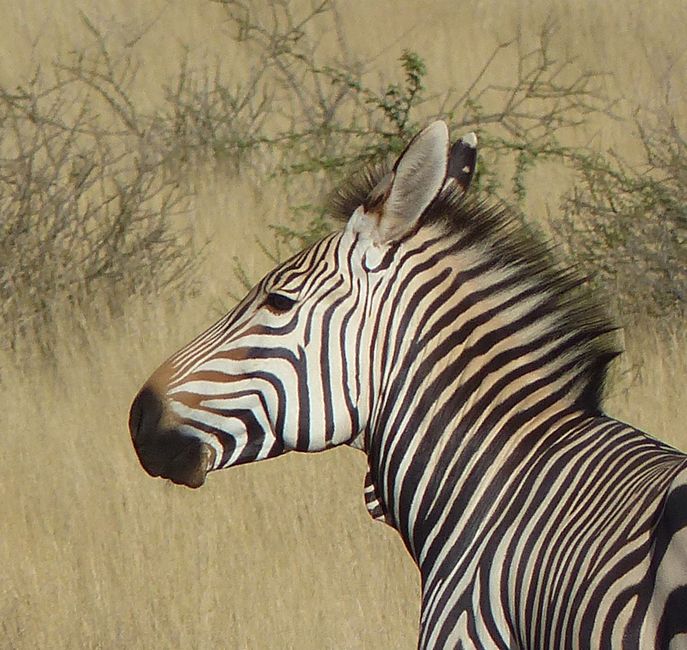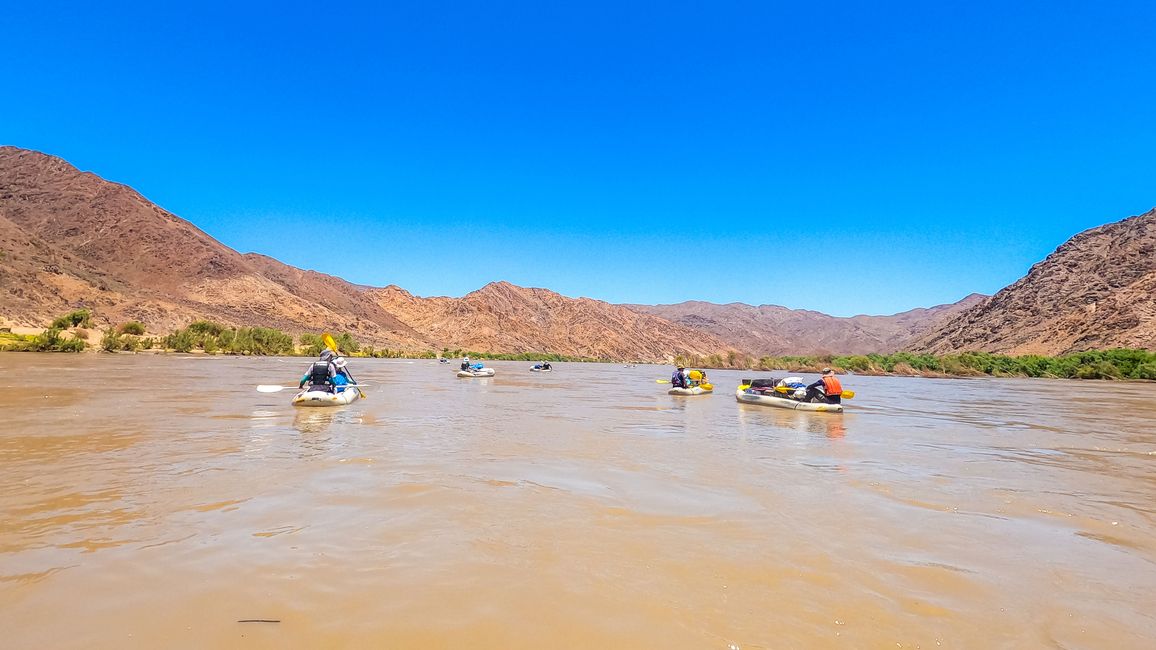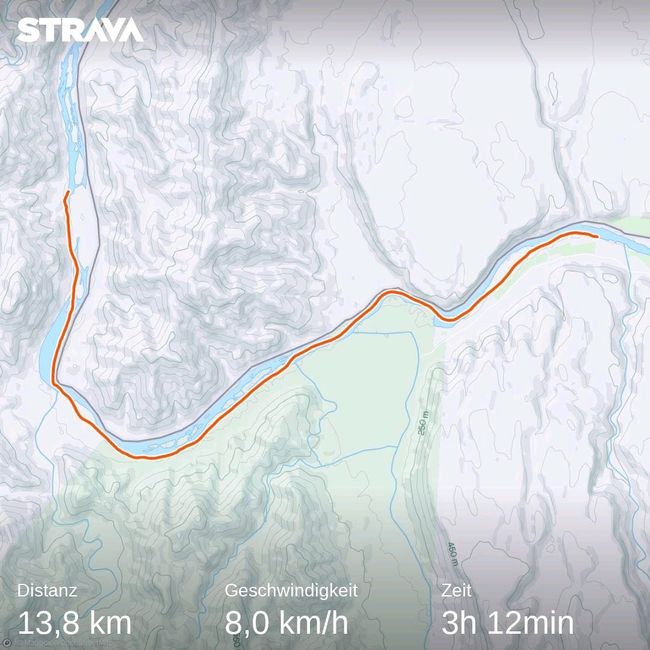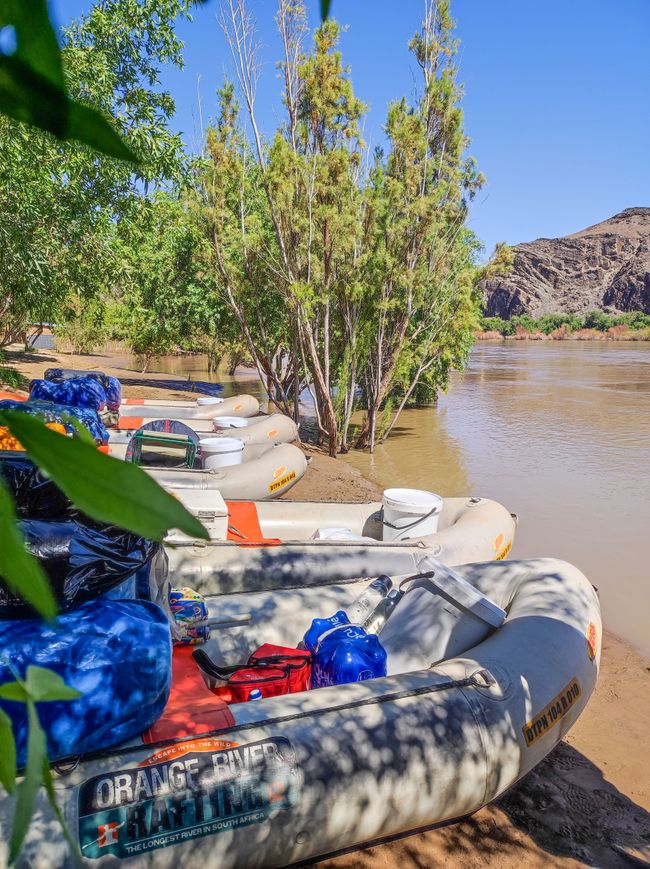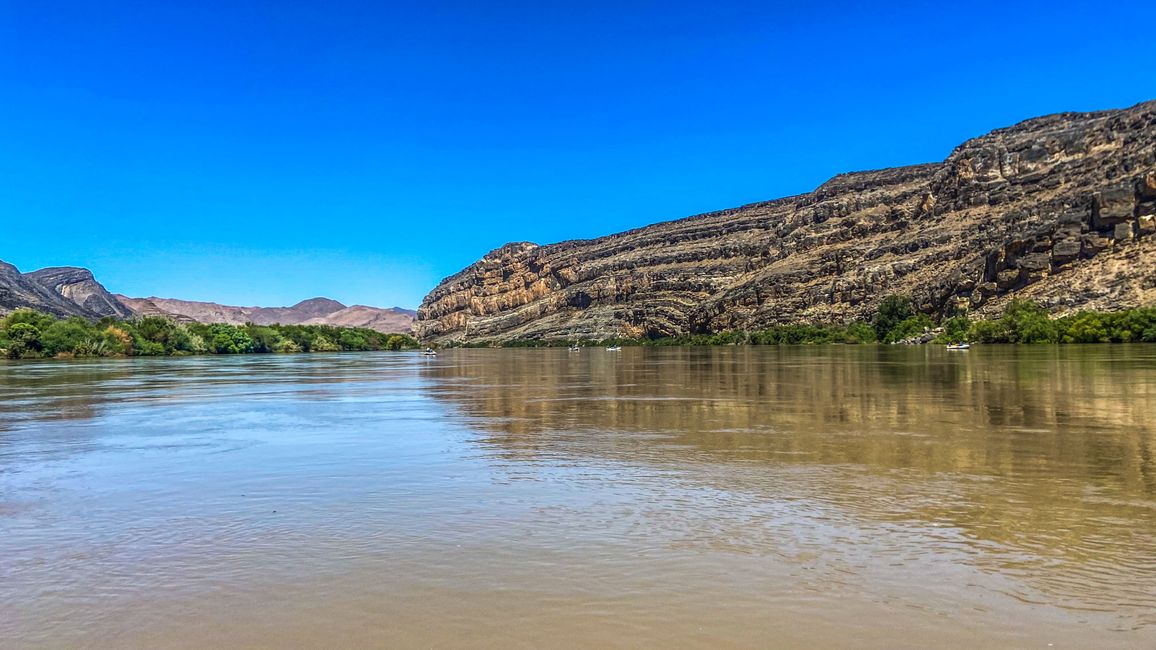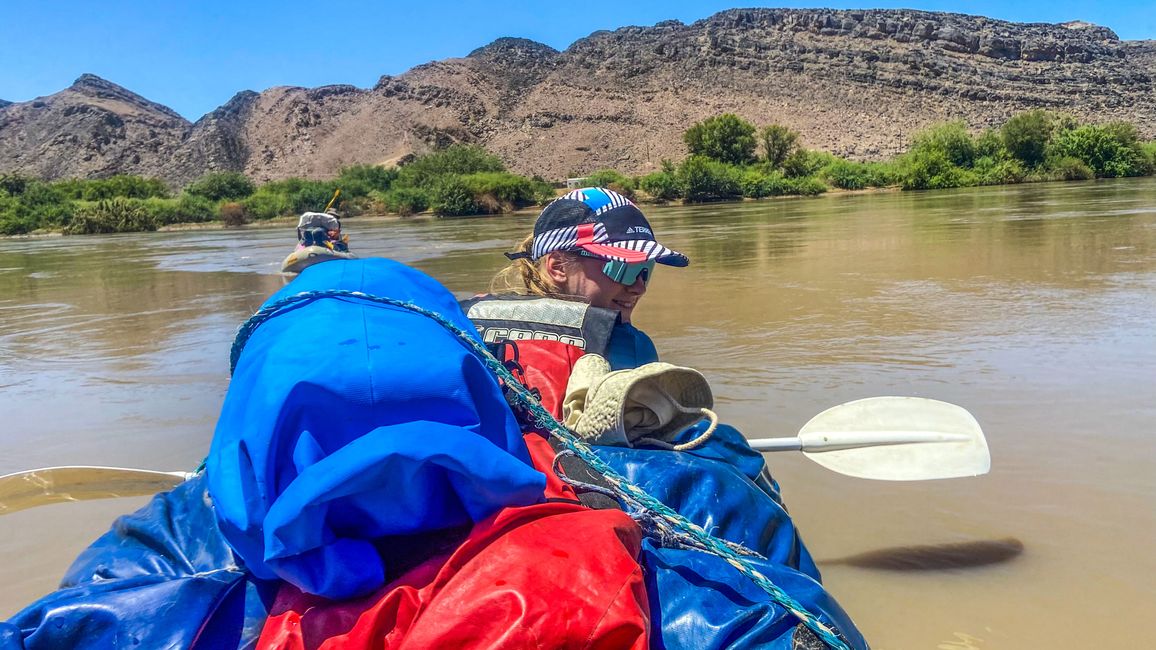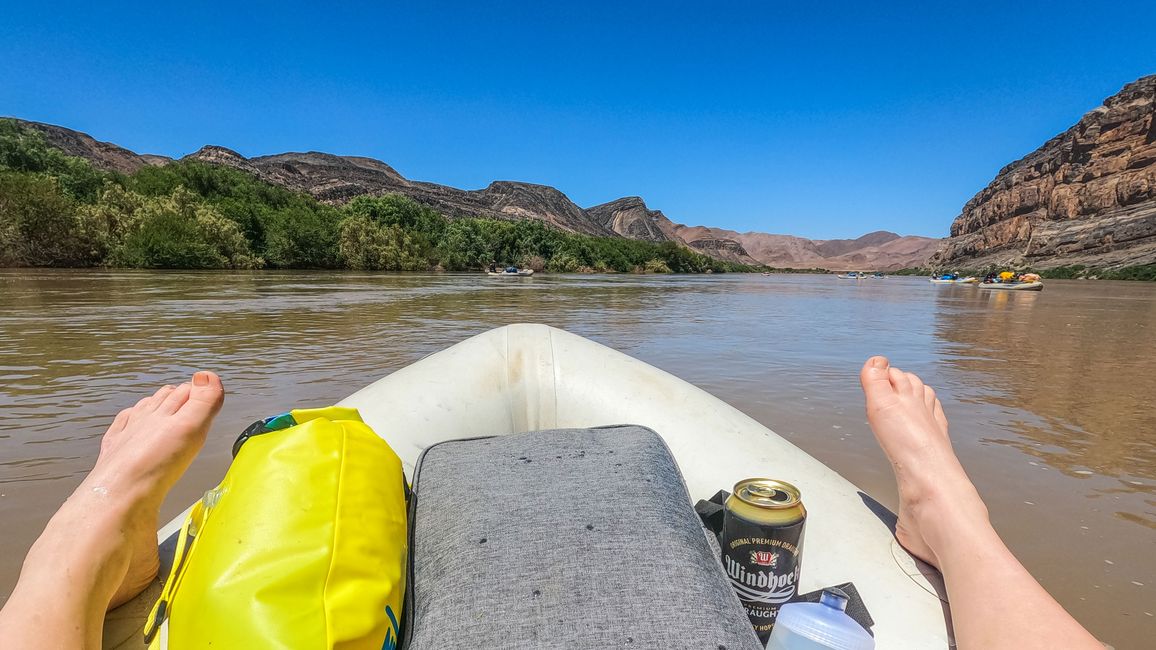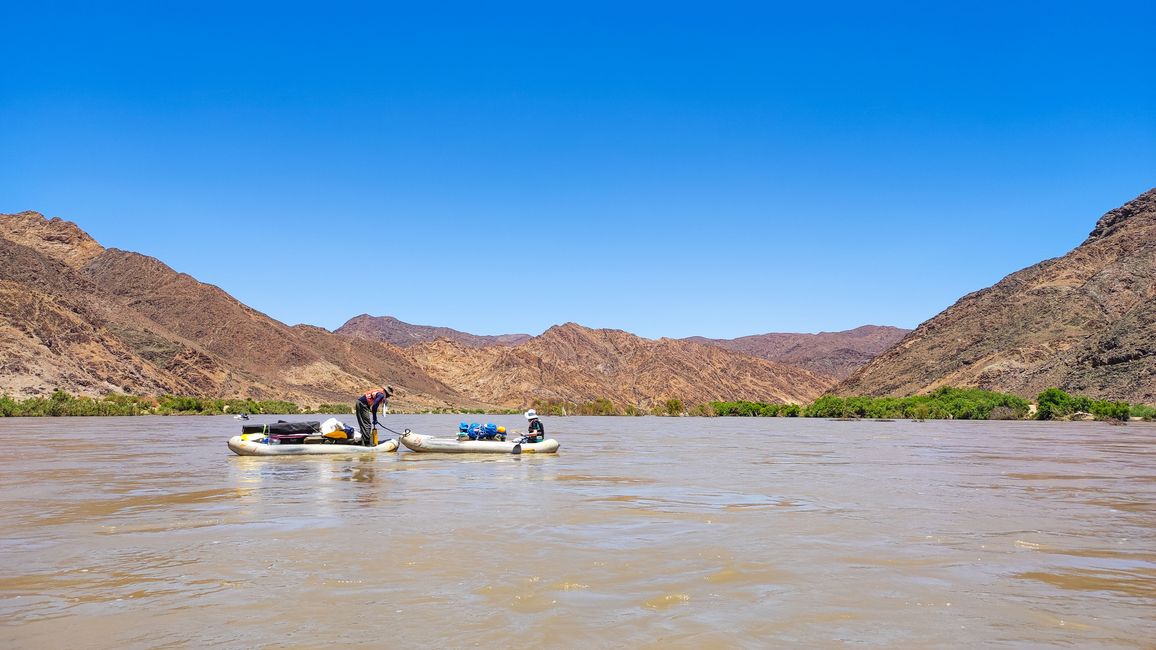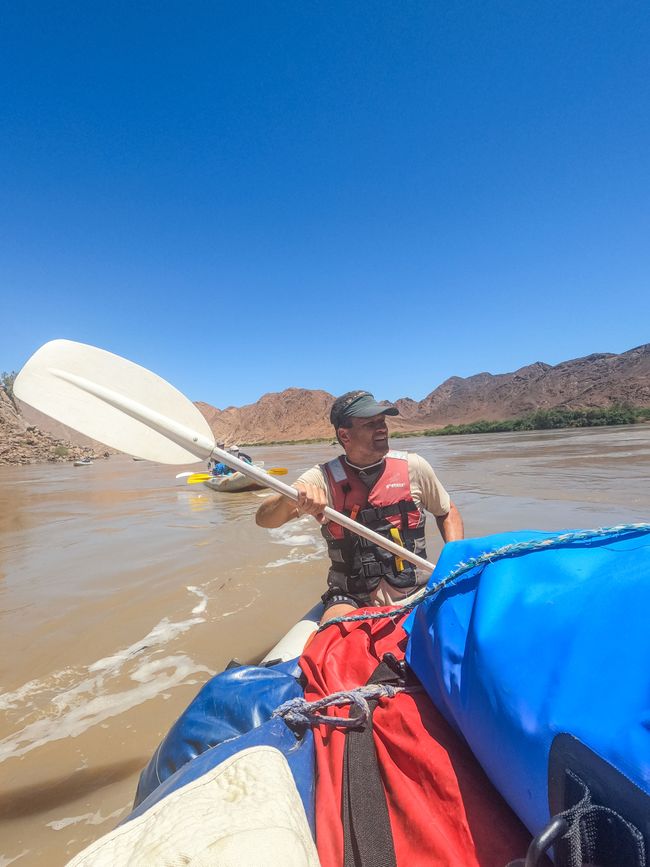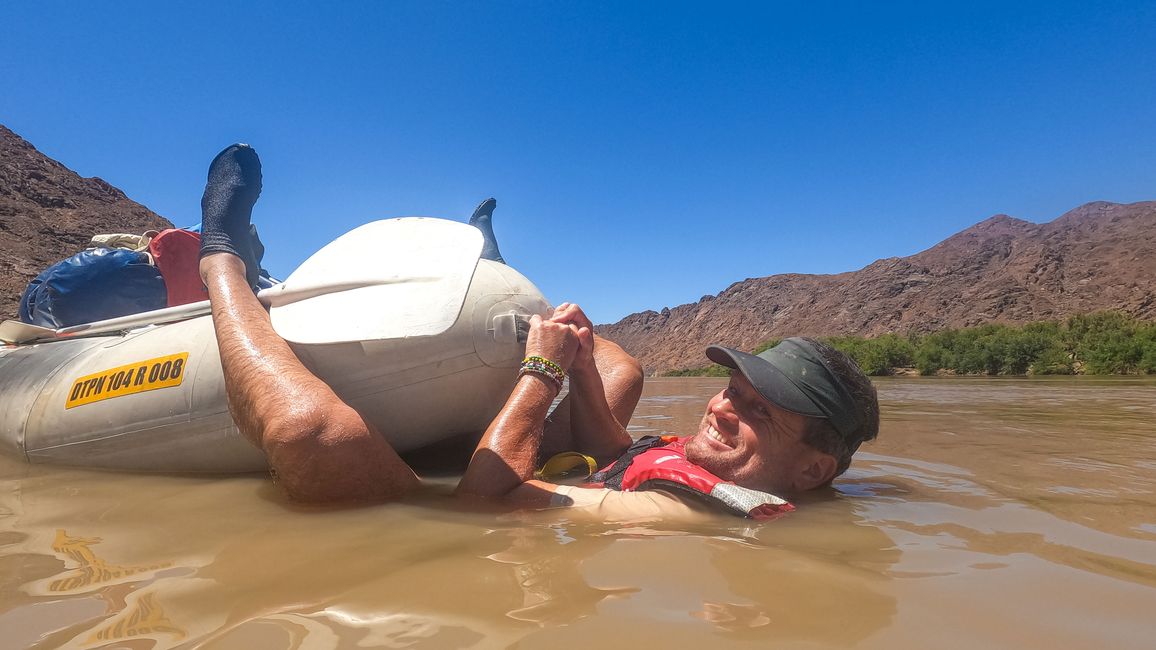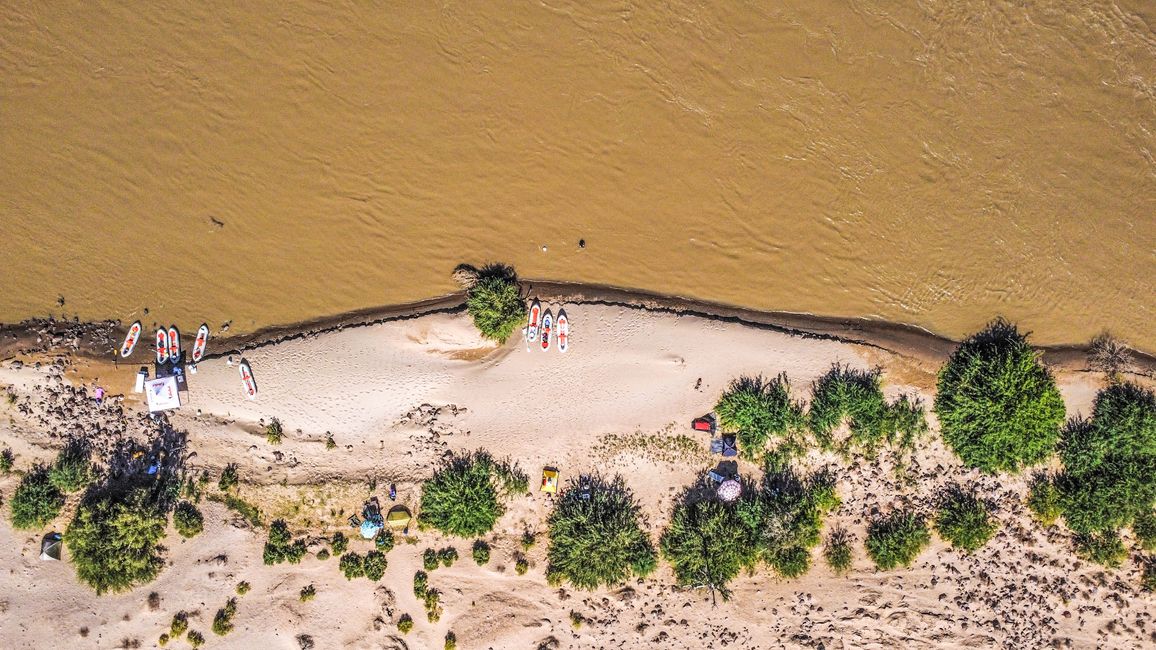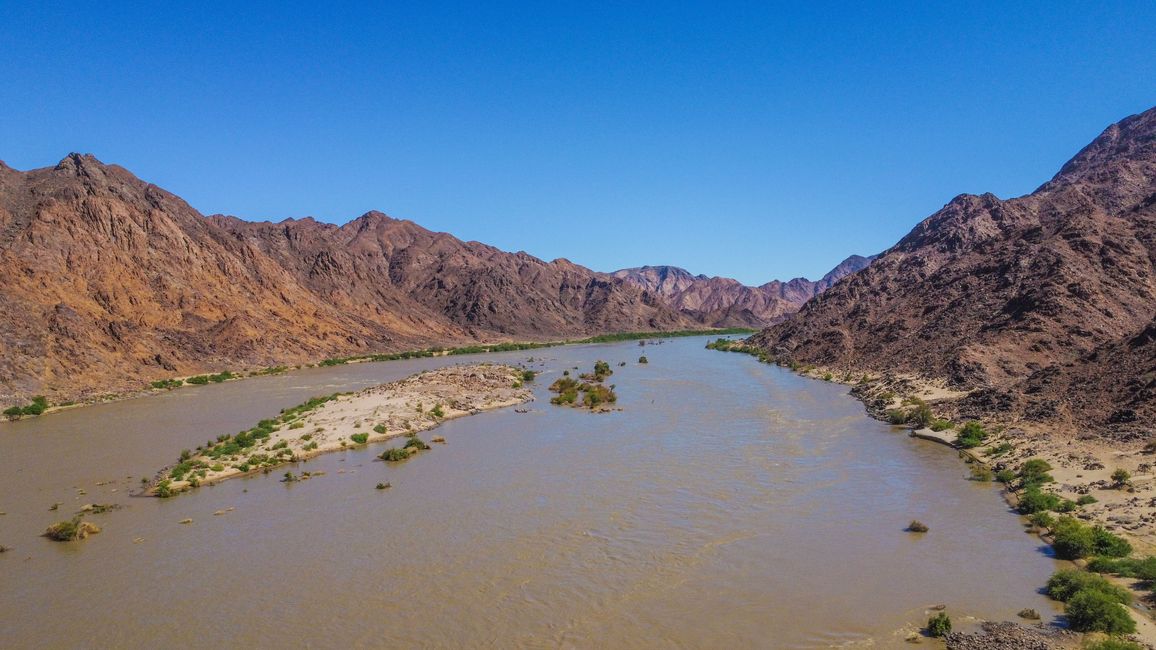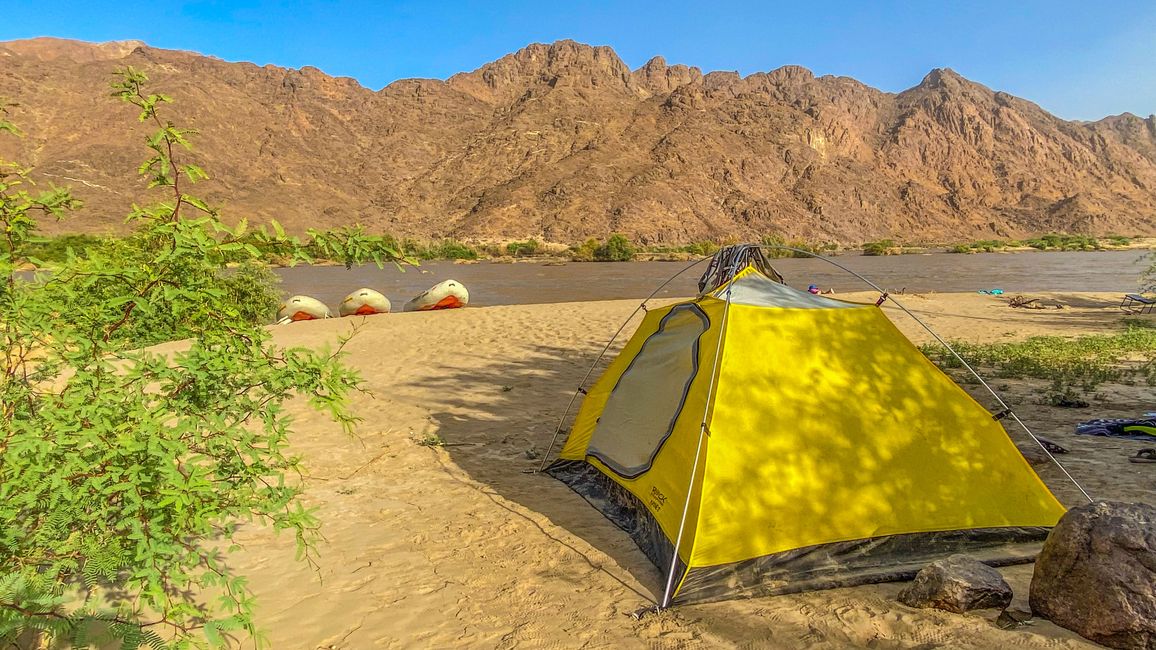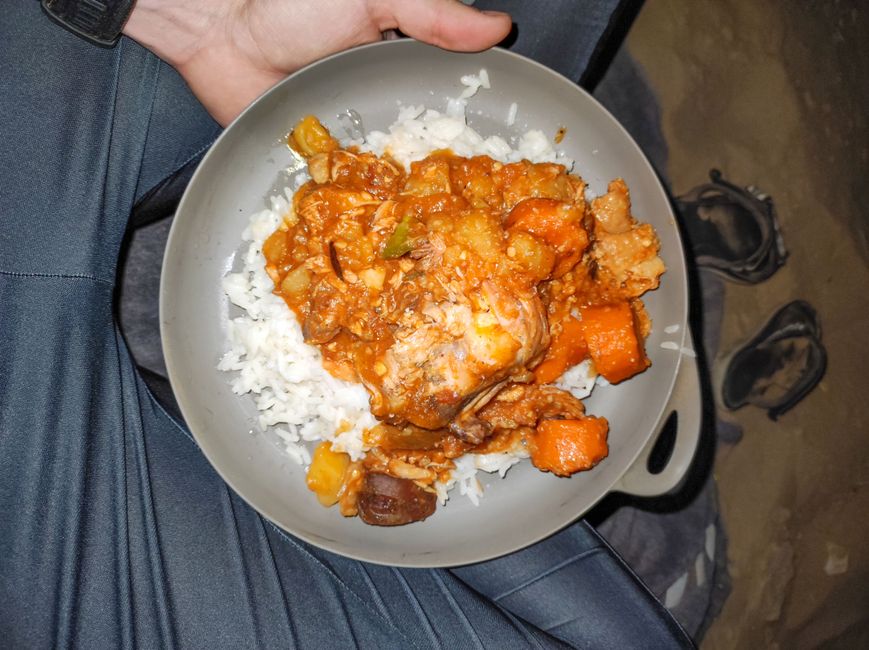Orange River
ꯐꯣꯉꯈ꯭ꯔꯦ꯫: 14.02.2023
ꯅꯤꯎꯖꯂꯦꯇꯔꯗꯥ ꯁꯕꯁ꯭ꯛꯔꯥꯏꯕ ꯇꯧꯕꯤꯌꯨ꯫
Day 3, 30.12.22, Orange River Rafting Day 1
Originally, the overnight stay in the small shack was booked for 2 people. In the middle of the night, we noticed that hundreds of mosquitoes had joined us and kept us from sleep. It was only after spraying the room with a spray called 'Peaceful Sleep' that we were able to get a little more peaceful sleep.
We arrive at breakfast feeling a bit tired and meet up again with our two guides, Craig and Dumi, the siblings Annemarie and Willem from Johannesburg and Mozambique, the newly married couple JC and Sam, also from Johannesburg, and Paul and Mareike with their 2 children, a German family currently living in Senegal.
During the second briefing, we are briefly explained that when the guide holds the paddle to the left, we must steer to the left, and vice versa. Paddle up means "Stop!". Apart from the fact that these signals were not used at all during the tour, this briefing was not really informative. But who needs it anyway, the Orange River is waiting for us.
The Orange River, with a length of 2,160 km (2,360 km with the Vaal), is the second longest river in southern Africa after the Zambezi. It flows through Lesotho and South Africa. According to the Heligoland-Zanzibar Treaty, the north bank forms the border between South Africa and Namibia. In contrast, the Namibian Constitution describes the middle of the river as the state border, which is not recognized by South Africa.
The Orange River rises as the Senqu in the Lesotho highlands and flows from there through the plateau landscapes of the Drakensberg Mountains in a westerly direction through South Africa. After leaving the hilly region about halfway through its course, it joins with the Vaal, its much larger tributary, which is about 200 kilometers longer than the main river, often called the Upper Orange River up to this point. However, the flow of the Vaal is only about 57% of that of the Orange River.
Shortly before reaching the border with Namibia, the Orange River has dug deep into the rock and forms, near the city of Upington, the famous Augrabies Falls, which are the center of the eponymous national park. Over the next 500 kilometers, it forms the border between Namibia and South Africa. It passes through the Ai-Ais Richtersveld Transfrontier Park. The Orange River flows into the Atlantic Ocean at Oranjemund, where it forms a lagoon-like estuary designated as a "Ramsar Protected Wetland".
Since prehistoric times, the Orange River has transported large quantities of sand from the interior to the estuary area in the South Atlantic. There, the sand is driven to the Namibian coast by the Benguela Current and the constant southwest wind, becoming the starting point for dune formation in the Namib. Hence, the Orange River is called the "Father of the Namib".
Due to recent heavy rain in the Drakensberg Mountains and especially in Johannesburg, the Orange River is four times wider than usual and its flow speed reaches up to 11 km/h instead of the normal 1-2 km/h. To experience this firsthand, we jump into the river and try to swim against the current and then let ourselves drift for a while. It's a very funny undertaking that lets us feel the power of the Orange River.
Having packed everything necessary into waterproof bags, placed the drinks in the provided coolers, loaded our boats, securely fastened everything, and taken a dip in the river to cool off again (it's now 41 degrees), we set off on our 3-day journey.
After a few paddle strokes, we reach the middle of the river and start drifting. We can prepare ourselves for the fact that rafting will be more like floating, but the fun will be the same, as we soon realize.
The view of the surrounding landscape is magnificent and breathtaking: majestically, the Orange River makes its way through the Richtersveld Desert with its mountains on the banks. We explore the wonderful view and let our souls relax until a strange hissing sound on the port side demands our attention. We discover that a little air is entering the interior of the raft through a small hole. A quick hand signal and Dumi glides over to immediately seal the hole and inflate the boat again, mind you, all at 11 km/h.
We already think this is an adventure of a special kind. Exactly at 11 o'clock, Annemarie and Willem float past us to toast with us. We don't hesitate for long, take out an ice-cold beer, and cool our throats. We don't know what the alcohol limit is for kayaking, but since none of us is "driving," it shouldn't apply to us.
We continue to drift until the first lunch break. With a few paddle strokes through smaller rapids, we still manage to get some exercise. For cooling off, we keep jumping into the water, floating with our life jackets. We think it's the best place to be in the heat at the moment, and we take turns constantly, so that one of us always stays in the boat if necessary.
After a short lunch break, we start looking for a suitable spot for our overnight camp. There are no fixed points along the tour, so every afternoon we look for a spot that is suitable for camping.
For the first night, after a total of 14 km of river travel, we find a beautiful sandbank on the South African side. Everyone finds a suitable spot and we pitch our tents. Immediately, we explore the area a bit, go swimming (or rather cooling off in over 40 degrees), and enjoy the view. Cindy thinks the view from above must be even more beautiful, so she grabs her small backpack and sets off for a hike.
The rest of us sit comfortably together with a drink and share stories from our lives. After her hike, Cindy joins us and tells us about her hike, which took her over the mountain behind us, and she tells us about the magnificent views. We decide to hire her as our guide for a hike tomorrow morning.
As the sun slowly sets, the fire is lit and Craig and Dumi prepare a delicious dinner in the form of a chicken potjie.
Literally translated, Potjiekos means "Little Pot with Food". Traditionally, the hearty stew is cooked and kept warm in a round three-legged cast-iron pot over the fire. The preparation of Potjiekos stands for shared interaction and conviviality. Sitting together by the fire or fireplace and preparing the stew while conversations develop. In addition to meat, the most common ingredients include vegetables, rice, or potatoes. There are no limits to the variety of vegetables. Anything that tastes good is allowed.
After dinner, we enjoy a freshly brewed coffee over the fire. This ends a wonderful day and sends us into the night.
ꯅꯤꯎꯖꯂꯦꯇꯔꯗꯥ ꯁꯕꯁ꯭ꯛꯔꯥꯏꯕ ꯇꯧꯕꯤꯌꯨ꯫
ꯄꯥꯎꯈꯨꯝ
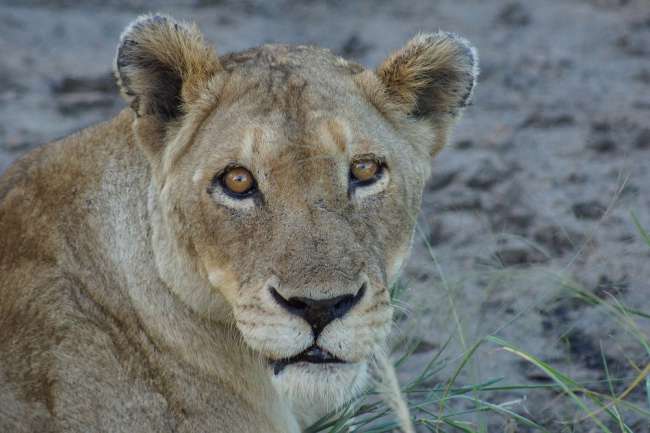
ꯆꯠꯊꯣꯛ-ꯆꯠꯁꯤꯅꯒꯤ ꯔꯤꯄꯣꯔꯇꯁꯤꯡ ꯈꯥ ꯑꯐ꯭ꯔꯤꯀꯥꯗꯥ ꯂꯩꯕꯥ ꯌꯨ.ꯑꯦꯁ

